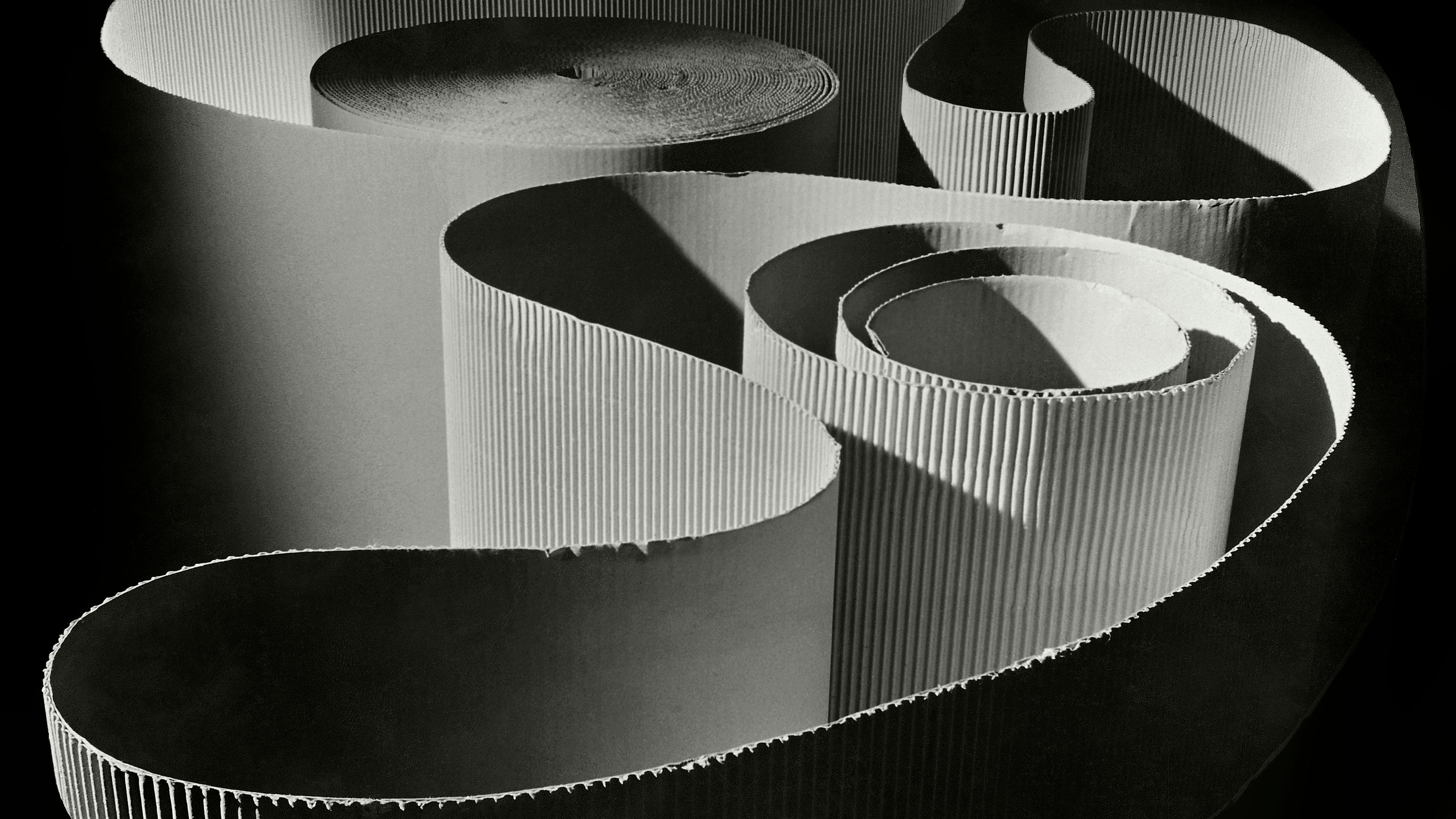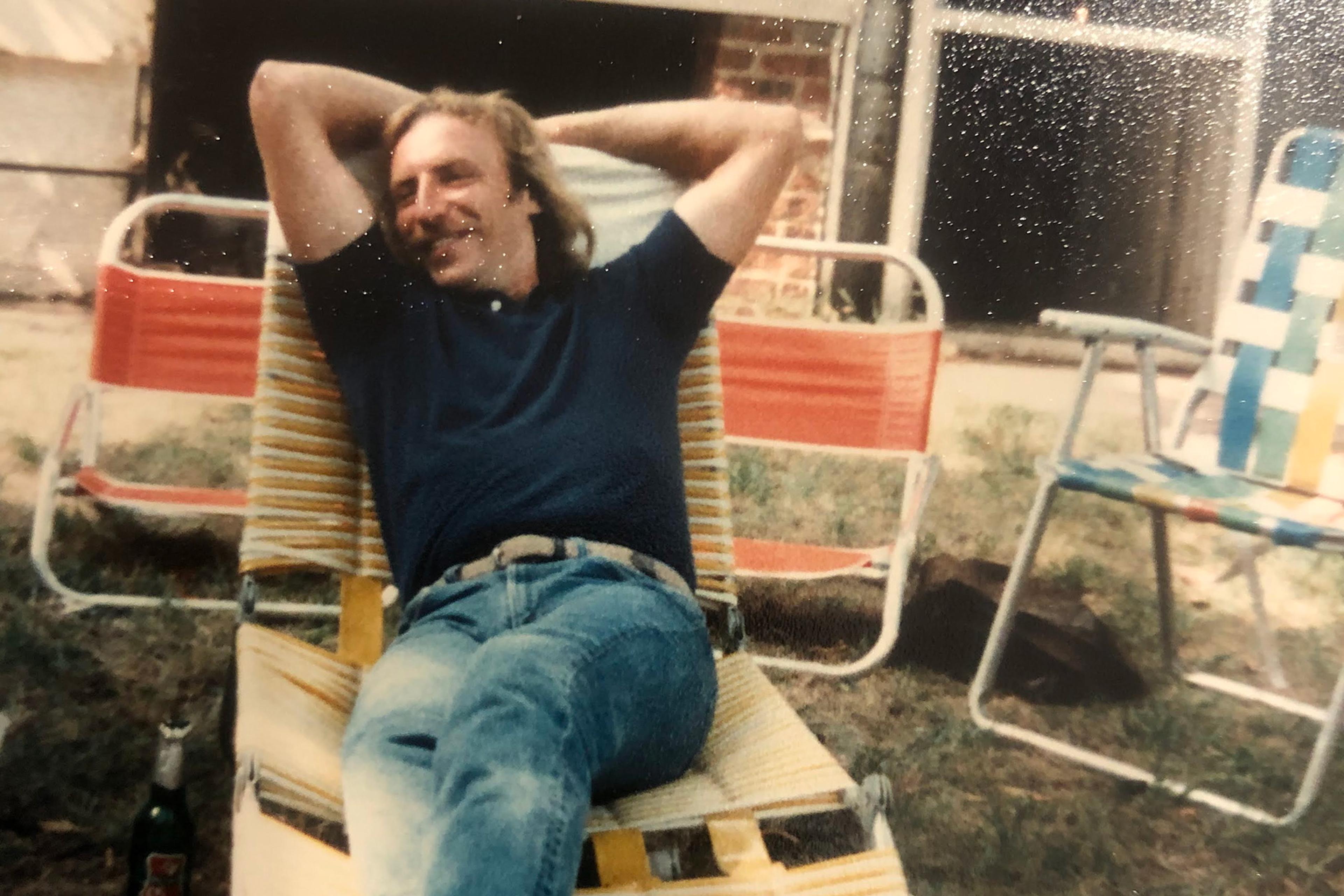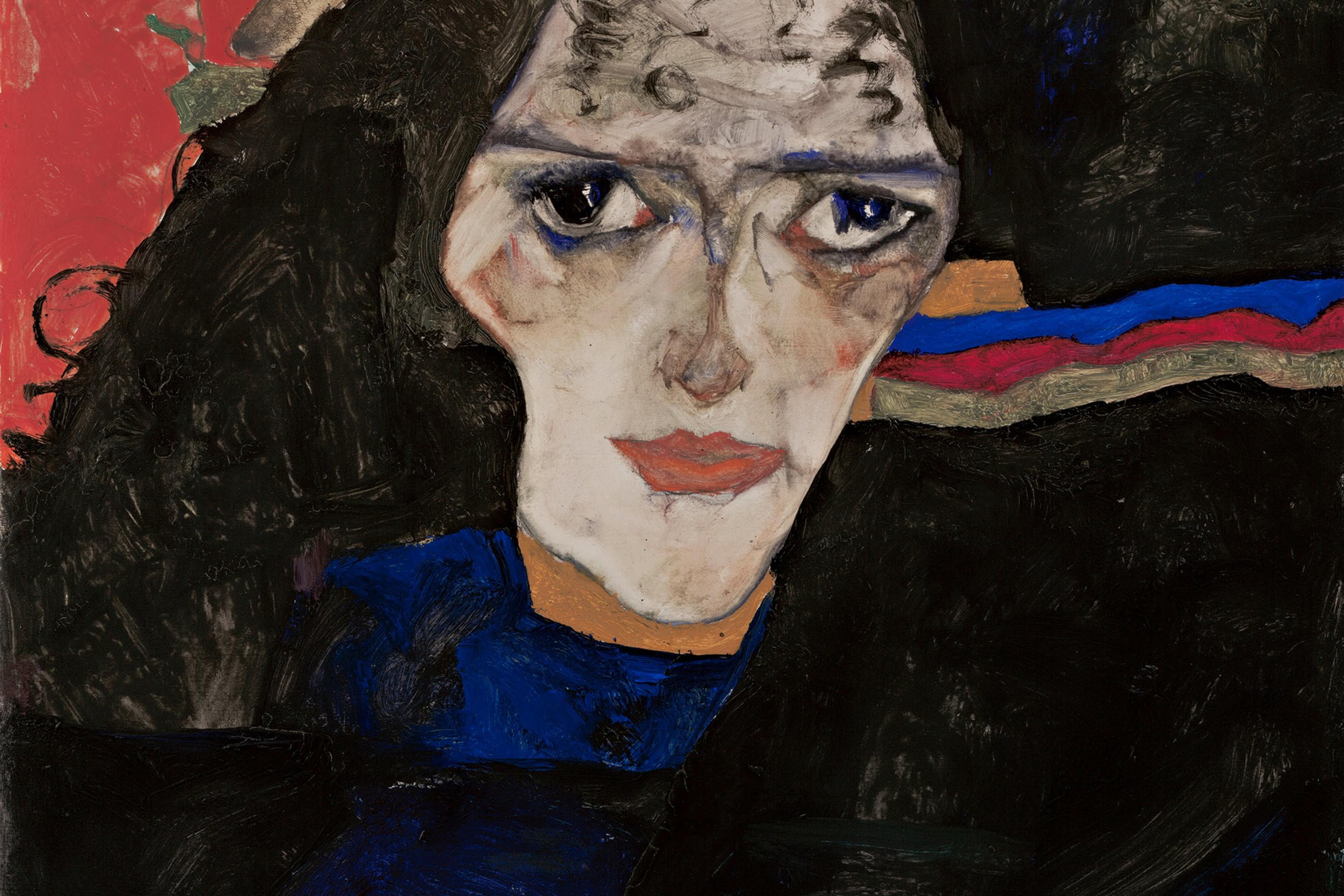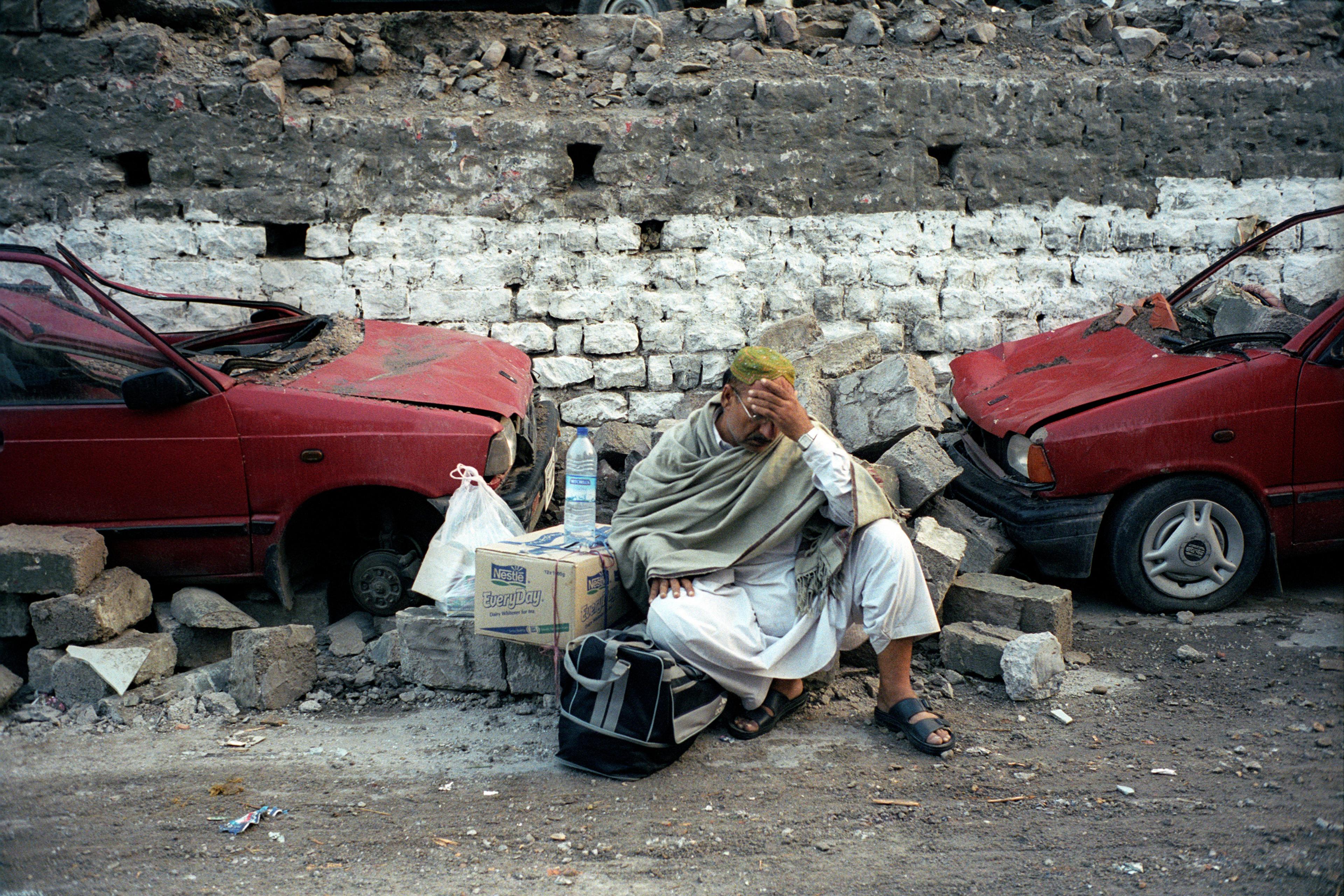I want to describe how thinking about geometry has helped me understand grief, and how thinking about grief has helped me understand geometry.
If your feelings for geometry are different from mine, the specifics of my approach might lack traction for you. Perhaps you can recast these ideas in terms of something you love. I’ll stick with geometry, which I’ve loved for as long as I can remember.
The first geometry that took my breath away was a proof of the Pythagorean theorem. Once you understand the main idea, the steps are so clear, the result absolute. Even as a little kid, I knew that moving these shapes around showed something about the mechanics of ideas. This was a thing true about the structure of space, independent of people or cats or clouds.
The next day, I recalled the steps of the proof and, although the logic was just as clear, the emotion was much reduced. Why didn’t I feel yesterday’s awe again? Eventually I realised that you can understand something for the first time only once. For me, and I expect for most mathematicians, understanding has two sides, intellectual and emotional. Both are important.
When a proof first fits exactly into your head, you get a glimpse of a joy subtle beyond all common measure
If you’re a bit fuzzy on what a proof is, think of it this way. Suppose you’re putting together a three-dimensional puzzle with clear plastic pieces. When you’re finished, you have a beautiful transparent sculpture. If you look at it from different directions, it refracts light into rainbows in unexpected ways.
Now imagine the sculpture isn’t in physical space but in the space of ideas. Like the physical puzzle pieces, these thoughts must fit together just so. When it’s assembled, it is a pattern of ideas. A proof is such a pattern. When we look at it from different points of view, it illuminates other ideas in new ways. And it reveals something universal about how our minds model the world. When a proof first fits exactly into your head, when you first understand how it works and why, you get a glimpse of a joy subtle beyond all common measure.
Of course, we can forget proofs. Almost everyone who has studied for a mathematics exam knows this. But when we see the proof again, the feeling is closer to meeting an old friend than being introduced to someone new. First understanding a proof is irreversible. You can recall this proof, or understand other proofs for the first time, but for each of these you get to first understand it only once.
About the same time that I understood a proof of the Pythagorean theorem, my Aunt Ruthie died. She was my father’s oldest sister. Endlessly curious, she was patient with little kids, really listened to what we said, always had a book to recommend. Ruthie is more directly responsible than anyone else for my becoming a scientist. When I was 11, she developed Hodgkin’s lymphoma, treatable now but not so much in the early 1960s. Dad told me that Ruthie was sick and she wasn’t going to get better. In fact, she would die soon. ‘Why’d Ruthie get sick? Did she do something wrong?’ ‘No, son, some people just get sick. Sometimes good things happen, sometimes bad things happen. But a lot of things that happen to us, we can’t do anything about.’ ‘Dad, that’s really scary.’ ‘Yes, son, it’s really scary.’
So I decided I’d save Ruthie. No more games of tag or hide-and-seek, no more watching fireflies at dusk. I’d work hard, learn all the science I could. Finish high school, college, graduate school, and medical school quickly. Work in a research lab, find a cure for Hodgkin’s lymphoma, and save Ruthie. I told Mom my plans, but instead of looking happy, she looked very sad. She said I couldn’t tell Ruthie, because I mustn’t get her hopes up. The advice was correct even if the reason wasn’t, but I got the point.
Then Ruthie died. Dad was in the hospital with her, holding her hand. Everyone wept, except me. I became grimly determined. Even if I couldn’t save Ruthie, I still could save other people. My grief was a call to action.
Not long after this, my uninspired, mechanical solution to a mathematics problem made me understand that I’m not bright enough to find cures for diseases. I hadn’t seen, maybe never would have seen, the simple pirouette from my clunky approach to the teacher’s elegant solution. Without this spark, medical innovation was impossible for me. My imagined life trajectory collapsed. Eventually, I studied physics and math, taught at several colleges, and by pure luck would end up teaching at Yale University and working with the polymath Benoit Mandelbrot.
By that time, I’d learned many proofs, and lost many friends, relatives, and cats. Still, I saw no connection between losing someone close and losing the first understanding of a proof. I’d had a few glimpses of how geometry could model emotions, but nothing concrete until a passage in Ethan Canin’s novel A Doubter’s Almanac (2016) and a conversation with my friend Joe Calamia, my editor at the University of Chicago Press, brought this into focus. The irreversible loss of anyone or anything with great emotional weight will cause grief. Each loss reveals new details of how we experience grief, how we fold it into our lives.
Both types of loss – of a loved one, or of first understanding a proof – signal a discontinuity, an abrupt break. To visualise the situation, we’ll need to simplify, to focus on a few pieces of our mental representation.
Here’s an experiment to guide us. Stand under a bright light and hold your left hand horizontally with your fingers spread. With your right hand hold a pad of paper horizontally under your left hand. The shadows of your fingers should be widely separated. Now tilt your left hand. Depending on the angle of the tilt, the shadows of your fingers get closer together.
The magnitude of the discontinuity can stand for the emotional weight of the irreversible change. Certainly, some losses have a larger impact than others. The different tilts of your hand represent projections to different spaces, that is, to focusing our attention on different aspects of our lives. So if we can find an appropriate way to focus our attention, we can reduce the magnitude of the discontinuity and thus blunt the pain of grief.
I am not willing to live a life without love in order to be spared the furious incandescence of grief
To fill in a bit more detail, think of all the dimensions that describe your life. Start with the obvious ones, three space coordinates (longitude, latitude, and altitude) and time. Then think of your emotional state. Where are you on the happy-sad axis, on the comfortable-anxious axis, and so on. At any moment, you are described by a point in the very high-dimensional space that characterises your mental state. If visualising this space is a problem, just think of it as a list of all the attributes of your state of mind. As time progresses, you trace out a path in this space, a path through this list. The discontinuity of an irreversible change is seen as a jump, a break, in this path.
At any moment, you can’t attend to all these coordinates, all the components of your emotional, physical and intellectual state. You are aware not of your position in the entire space, but of only a projection, a shadow on a much lower-dimensional space. This lower-dimensional space is the list of those aspects of your life that hold your attention at the moment.
Return to the image of the shadow of your hand. With the right tilt of your hand, the space between the shadows of your fingers can disappear completely. But this I think we do not want to do, for I fear that removing grief also would remove love. I am not willing to live a life without love in order to be spared the furious incandescence of grief. We may salve the pain, but we should never delete it.
How are we to find an effective projection? Here again geometry can help. As far as I can tell, while griefs differ in magnitude, at a fundamental level they are similar. Moreover, each grief is made of many smaller griefs, which in turn are made of still smaller griefs. Grief is self-similar, it is fractal. How does this help?
For an example, I’ll use the death of my father in January 2016. I miss how he compared every US president, unfavourably, to Harry Truman. I miss how, 20 minutes into any visit, he’d put on a cowboy movie and then fall asleep. But mostly I miss his stories. Stories of his childhood in Rosedale, West Virginia, his Second World War US Navy service in the Pacific, his home repair and construction work for family and friends. Each of these griefs is a component of my whole grief at losing Dad, and each of these has similar sub-griefs, stories of specific projects, stories of parts of projects, and so on. These smaller griefs are a laboratory to study the larger griefs. I think of how Dad helped neighbours, and I project my grief to the space of helping people. I see Dad’s work as part of a larger pattern. Whenever I help shovel snow from our neighbour’s sidewalk or help our veterinarian talk through a rough day, I remember Dad’s work, and my grief has a subtext of happiness. This part of Dad’s life continues.
Now zoom out and think of other things I miss about Dad. The lesson from the laboratory of helping people is to not just remember, but to act. Remembering Dad’s military service, I talk with Navy and Marine Corps veterans, listen to their stories, share stories about Dad. Dad grew up a hillbilly and, whenever he was outside of West Virginia, he suffered from the false hillbilly tropes spread by coal and lumber companies in the 19th century. So, my cousin Patti Reid and I are writing a book on hillbilly culture, to present a more accurate picture. Dad was not an ignorant, slack-jawed yokel. Nor are many Appalachians. His absence in my life helps me craft a clearer explanation of this.
Geometry has shown me this about grief: focus on one aspect (this is the projection), find a way to push that out into the world, and apply the same strategy for all aspects of grief. Geometry has shown me that grief is a licence for action.
What has grief shown me about geometry? That many first moments of understanding are gone for me, but I can help others have those moments. I taught mathematics for 43 years. Now I understand another, deeper, reason why.








